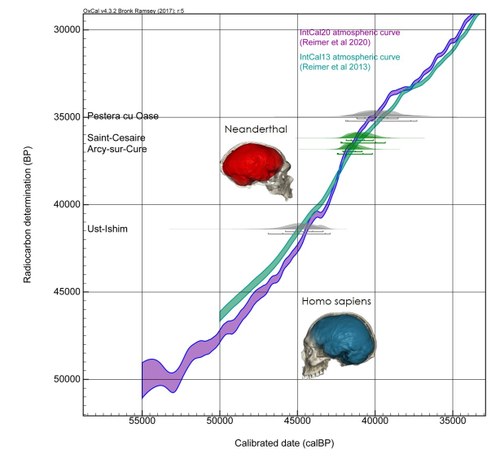
The Bologna Radiocarbon laboratory devoted to Human Evolution (BRAVHO) is a radiocarbon laboratory supported by the ERC _RESOLUTION Project (n. 803147).
This implies that for 5 years the laboratory is mainly devoted to the RESOLUTION project for the pretreatment of fossil trees, and the pretreatment of bones, charcoals and shells typically found in the archaeological sites for the study of Human Evolution.
RADIOCARBON DATING
The radioactive isotope of 14C is created in the upper atmosphere by cosmic rays, and is transported from the atmosphere to the global carbon reservoirs, where the majority finally ends up in marine and continental sediments. After formation, 14C quickly combines with oxygen, and enters the carbon system as 14CO2, which is chemically identical to ordinary 12CO2, and thus is well mixed within the atmosphere.
The value of the half–life established by Libby was 5568 years (Libby, 1955). A more accurate value was determined later to 5730±40 years (Godwin, 1962, Olsson, 1968, Stuiver and Polach, 1977). The Libby value is still used conventionally (Stuiver and Polach, 1977) because so many published radiocarbon dates were based on it and the calibration of radiocarbon ages (see below) eliminates any error in the true value of the half-life.
14C dating of organic samples depends on radioactive decay of carbon obtained initially from the atmosphere. However, 14C concentration in the atmosphere has not been constant in the past and, thus, to determine the true age of an unknown sample, radiocarbon ages must be corrected and converted to calendar ages by comparison to an absolutely dated 14C archive, a procedure called calibration.
All organic material can be used for radiocarbon dating.
The precise and accurate measurement of carbon isotope ratios in samples and high resolution conversion to calendar ages are the two elements that contribute to the accuracy of radiocarbon dating.
Radiocarbon ages are called uncalibrated ages and denoted as 14C BP or simply BP, whereas calibrated ages are denoted cal BP or cal BC/AD, which are calendar years before 1950 AD
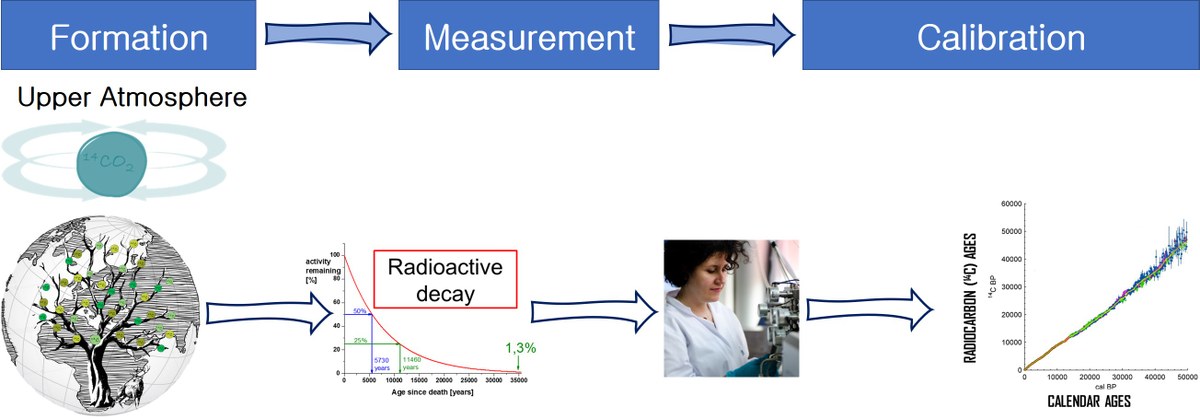
CHEMICAL SAMPLE PRETREATMENT
14C dating of samples older than 30,000 years is still challenging and requires outstanding efforts in sample selection and in laboratory procedures. The remaining 14C activity, in this time period, is below 2% and therefore samples are especially vulnerable to younger or modern contamination in situ and in the lab.
However, we observe, over the past several years, substantial progress in the extraction of original carbon from contaminated samples. It has been shown convincingly that bone collagen extraction generally requires ultrafiltration (in our lab, we use the ultrafiltration step) and careful cleaning of the filter. It has also been demonstrated that the standard pretreatment procedures for charcoal (Acid-Base-Acid - ABA) may not remove young contamination in old charcoal sufficiently, and a subsequent step of oxidation and stepped combustion (ABOX-SC) results in older ages compared to ABA. On the other hands, some scholars retain ABA dates still reliable and not much different from the new ABOX-SC procedures (In our lab we use both methods).
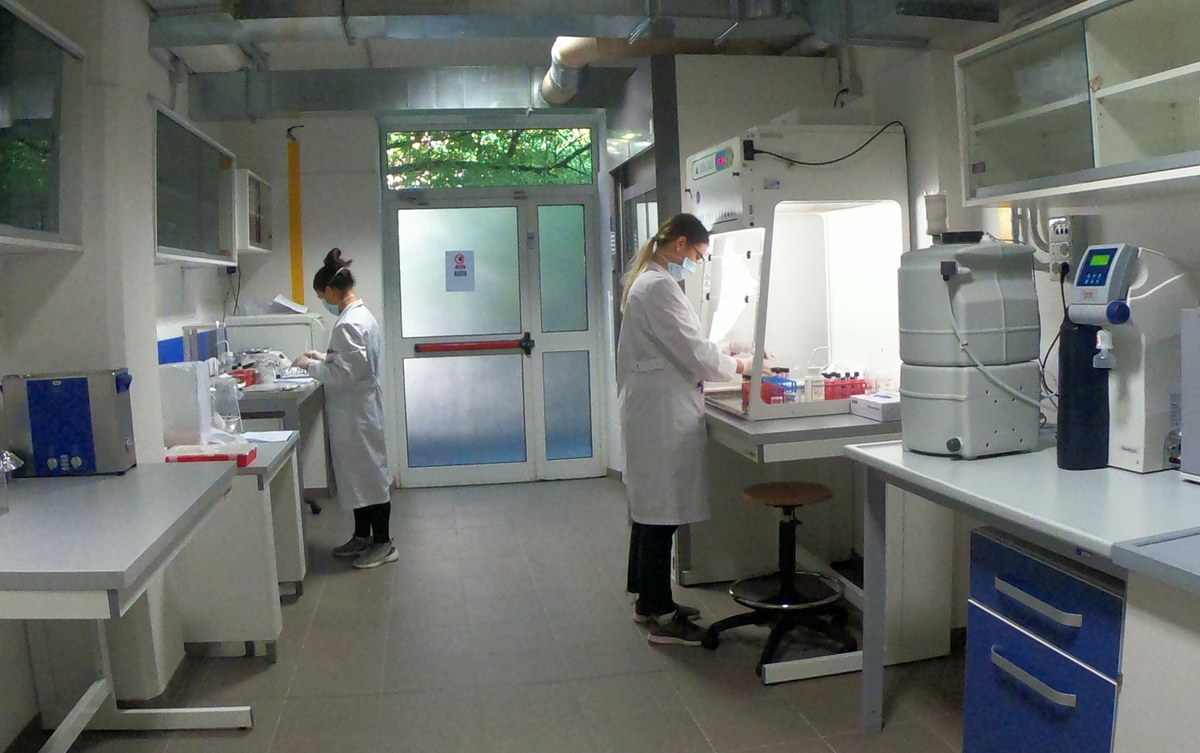
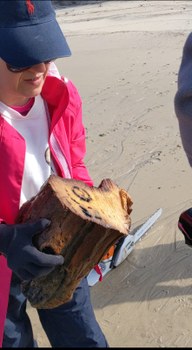
Trees
We are testing different pretreatment methods to extract pure cellulose.
Paragraph underway
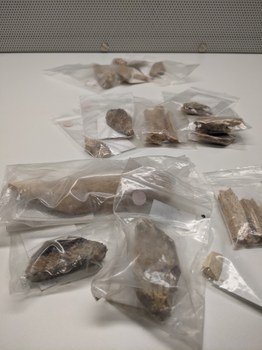
Bones
Bone is a body tissue composed of bioapatite (mineral, crystalline carbonate–hydroxylapatite inorganic phase 60-70 wt%), collagen (proteins, the organic fraction 20-30 wt%), and water (ca.10 wt%). Bones are an abundant material at archaeological sites and are highly attractive for radiocarbon dating. However, the complex composition of bone means that purifying endogenous carbon is an intricate process.
The procedures used to extract collagen from bones are following the protocols written in Talamo & Richards 2011 (link to the paper) and Fewlas et al. 2019 (link to the paper).
There are still potential problems with the relatively open system of burnt bones. This kind of sample is still considered problematic. Their dates should be treated with extreme caution; several experiments have been undertaken but satisfying results are lacking due to several factors which can influence the final results (e.g. post-cremation exchange of carbonate).
We do not date burnt bones.
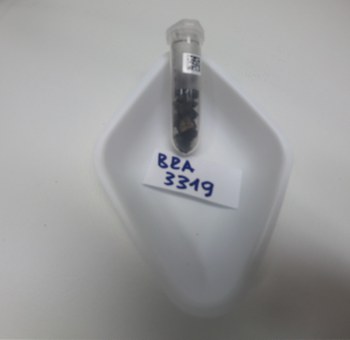
Charcoals
We are testing different pretreatment methods to extract pure carbon.
Paragraph underway
Marine Shells
Other samples which provide information on the human activities in an archaeological site and can also be radiocarbon dated are shells. In this case, as well as for other materials, improvements on the pretreatment method were fundamental to remove secondary calcite and estimate the real age of these samples. We are testing different methods for the pretreatment of marine shells. Paragraph underway
AMS in collaboration with…
In the last 30 years, Accelerator Mass Spectrometry (AMS) has become one of the most important tools in prehistory and the geosciences and is used to perform the majority of 14C measurements. In AMS, one counts 14C atoms, while the previously used decay-counting methods only registered radioactive decays (b particles) (Kromer and Münnich, 1992). This makes the AMS technique 1,000 to 10,000 times more sensitive than the counting of radioactive decay.
In 2007, the Laboratory of Ion Beam Physics at ETH Zurich announced the development of the MIni CArbon DAting System (MICADAS), a compact AMS equipped with an ion source capable of accepting both solid and gas samples.
We do not have an AMS in Bologna but we have the graphitization system. For the measurement in the AMS spectrometer we collaborate with various MICADAS laboratories (so far: ETH, Zurich; MAMS, Mannheim; GrA, Groningen; CEREGE, Aix-en-Provence).
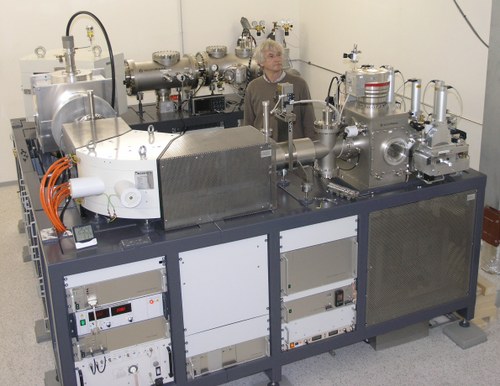
Calibration Curve and Bayesian Modelling
The new calibration curve IntCal20 is going back to 55 ka BP (Reimer et al. 2020), and is updating the previous version IntCal13 (Reimer et al. 2013).
We use the Bayesian statistics when we have large radiocarbon datasets so that we can interpret the radiocarbon data. Bayesian methods combine radiocarbon dates with stratigraphic information from the archaeological context, using the OxCal software (Bronk Ramsey, 2009). This analysis permits stratified sequences of radiocarbon dates to be modelled statistically increasing the chronological precision of the archaeological site.
The OxCal program, to build a model for archaeological sites using the probability distribution, has been updated as well and now incorporates the new IntCal20. The new version is OxCal 4.4 available at: https://c14.arch.ox.ac.uk/oxcal.html
At BRAVHO lab we build models using OxCal 4.4 and IntCal20.
